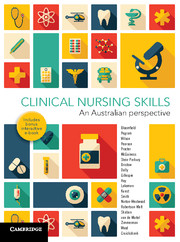16 results
Novel Respiratory Viruses in the Context of Mass-Gathering Events: A Systematic Review to Inform Event Planning from a Health Perspective
-
- Journal:
- Prehospital and Disaster Medicine / Volume 36 / Issue 5 / October 2021
- Published online by Cambridge University Press:
- 15 July 2021, pp. 599-610
- Print publication:
- October 2021
-
- Article
- Export citation
Factors Influencing Health Care Workers’ Willingness to Respond to Duty during Infectious Disease Outbreaks and Bioterrorist Events: An Integrative Review
- Part of
-
- Journal:
- Prehospital and Disaster Medicine / Volume 36 / Issue 3 / June 2021
- Published online by Cambridge University Press:
- 23 February 2021, pp. 321-337
- Print publication:
- June 2021
-
- Article
-
- You have access
- Open access
- HTML
- Export citation
Rethinking Mass-Gathering Domains for Understanding Patient Presentations: A Discussion Paper
-
- Journal:
- Prehospital and Disaster Medicine / Volume 36 / Issue 1 / February 2021
- Published online by Cambridge University Press:
- 01 December 2020, pp. 121-124
- Print publication:
- February 2021
-
- Article
- Export citation
The Impact of Mass Gatherings on Emergency Department Patient Presentations with Communicable Diseases Related to Syndromic Indicators: An Integrative Review
-
- Journal:
- Prehospital and Disaster Medicine / Volume 35 / Issue 2 / April 2020
- Published online by Cambridge University Press:
- 19 February 2020, pp. 206-211
- Print publication:
- April 2020
-
- Article
- Export citation
Part IV - Skills required to care for patients with specific needs
-
- Book:
- Clinical Nursing Skills
- Published online:
- 05 December 2019
- Print publication:
- 21 October 2016, pp 435-436
-
- Chapter
- Export citation
Glossary
-
- Book:
- Clinical Nursing Skills
- Published online:
- 05 December 2019
- Print publication:
- 21 October 2016, pp 507-513
-
- Chapter
- Export citation
6 - Infection prevention and control
- from Part III - Fundamental skills for patient care
-
-
- Book:
- Clinical Nursing Skills
- Published online:
- 05 December 2019
- Print publication:
- 21 October 2016, pp 123-156
-
- Chapter
- Export citation
Part I - Skills in nursing
-
- Book:
- Clinical Nursing Skills
- Published online:
- 05 December 2019
- Print publication:
- 21 October 2016, pp 1-2
-
- Chapter
- Export citation
List of contributors
-
- Book:
- Clinical Nursing Skills
- Published online:
- 05 December 2019
- Print publication:
- 21 October 2016, pp xiii-xvi
-
- Chapter
- Export citation
Part III - Fundamental skills for patient care
-
- Book:
- Clinical Nursing Skills
- Published online:
- 05 December 2019
- Print publication:
- 21 October 2016, pp 121-122
-
- Chapter
- Export citation
Contents
-
- Book:
- Clinical Nursing Skills
- Published online:
- 05 December 2019
- Print publication:
- 21 October 2016, pp v-xii
-
- Chapter
- Export citation
Part II - Communication and assessment
-
- Book:
- Clinical Nursing Skills
- Published online:
- 05 December 2019
- Print publication:
- 21 October 2016, pp 71-72
-
- Chapter
- Export citation
Index
-
- Book:
- Clinical Nursing Skills
- Published online:
- 05 December 2019
- Print publication:
- 21 October 2016, pp 514-523
-
- Chapter
- Export citation
Frontmatter
-
- Book:
- Clinical Nursing Skills
- Published online:
- 05 December 2019
- Print publication:
- 21 October 2016, pp i-iv
-
- Chapter
- Export citation

Clinical Nursing Skills
- An Australian Perspective
-
- Published online:
- 05 December 2019
- Print publication:
- 21 October 2016
-
- Textbook
- Export citation
Acknowledgements
-
- Book:
- Clinical Nursing Skills
- Published online:
- 05 December 2019
- Print publication:
- 21 October 2016, pp xvii-xviii
-
- Chapter
- Export citation



